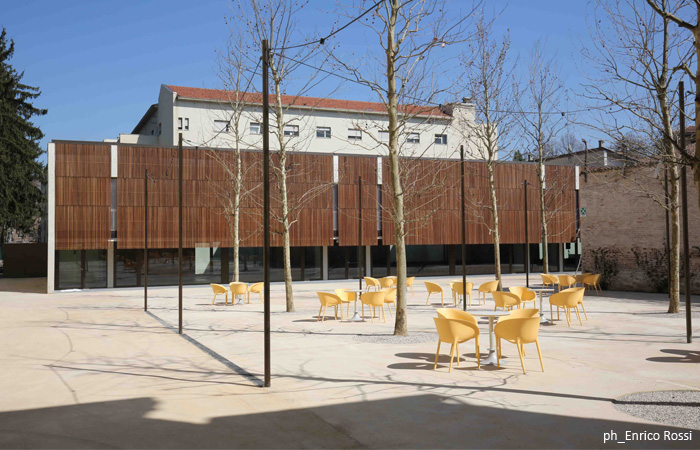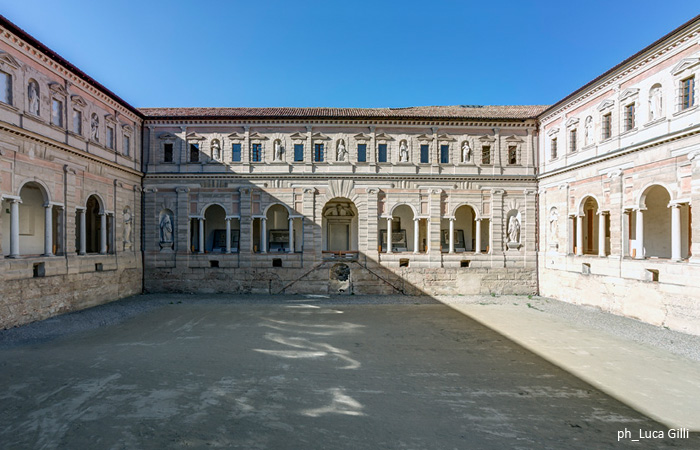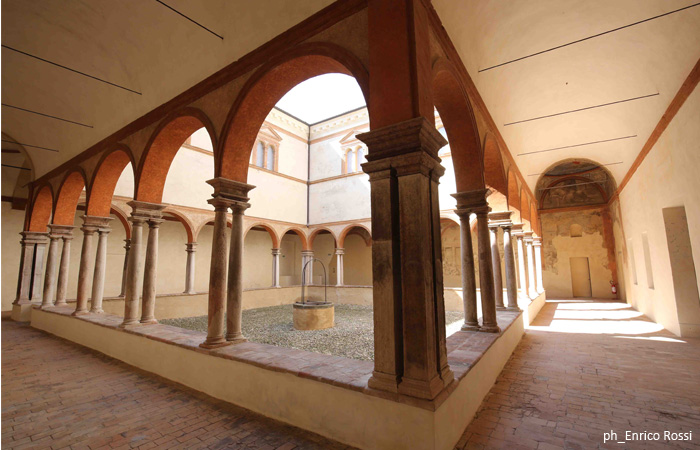Guided tours of the San Pietro Cloisters
Information
For more information about the Monumental Complex and/or customized tours: 0039 0522 456233
info@archeosistemi.it
Ticket office
Vivaticket
It is advisable to buy the ticket in advance to access the guided tours of the San Pietro Cloisters. Alternatively, it is always possible to book and buy directly on the spot, subject to availability, at the Cloisters ticket office. The online price has an additional cost of Euros 1.00.
Prices
Free
Entrance with no guided tour. Entrance with guided tour for children under 5, disabled and their helpers, guided and interpreters, journalists.
Full Euros 5.00
Entrance with guided tour
Reduced Euros 2.00
Entrance with guided tour for children and students aged 6-26, people over 65.
The works for the construction of the Cloisters began at the beginning of the XVI century, as a previous convent located outside the walls had to be transferred into the town.
The monastic complex, including courtyards and vegetable gardens, occupied a large area from the Via Emilia to the walls and belonged to the Benedictine monks who officiated in the adjoining San Pietro Church.
The convent was articulated around two cloisters: one of small size with a late XV-century style and one with a large plan and Mannerist style.
The Small Cloister was built between 1524 and 1525 by Bartolomeo Spani, a dominant artistic figure in the early XVI century in Reggio Emilia, who adopted a typically Renaissance layout - modular structure of Brunelleschi's imprint.
Thanks to the recent restoration, the frescoed walls, which were covered with a layer of lime in the 1950s, have been recovered, at least partly.
The Large Cloister is completely different in style; it was built about sixty years later by Prospero and Francesco Pacchioni, who adopted a Mannerist layout with ashlarwork on the walls and, on the upper floor, gabled windows with niches decorated with mighty statues of saints of the Benedictine order, made by the brothers Bernardo and Francesco from Lugano in the sixties of the XVII century.
The Cloisters project was clearly influenced by the model of Mantua-based, designed by Giulio Romano.
In 1783 the monastery was suppressed and used as a military warehouse, then seat of the Court of Justice.
During the Restoration, the building became the seat of the Educandato delle Fanciulle, entrusting the transformation of the building to Domenico Marchelli who standardized the façade on the Via Emilia in the neoclassical style, inserting it into the much larger project for the demolition of the arcades of the Via Emilia.
The entrance of the monastic complex, originally in the churchyard, was located in the main street, definitively separating the church and monastery.
Immediately after the unification of Italy, the building was transformed into military barracks, the arches of the Small Cloister were plugged and a series of tenements were built in the area once used as vegetable gardens.
The recent restoration has eliminated the infill and tried to restore the complex to its original shape.
Today the Cloisters are frequently used for exhibitions and events.
How to get there
From the Railway Station, after crossing Viale IV Novembre, take Via Emilia San Pietro from Piazzale Tricolore, follow the road for about 150 metres and then turn right, immediately before the church of the same name.








